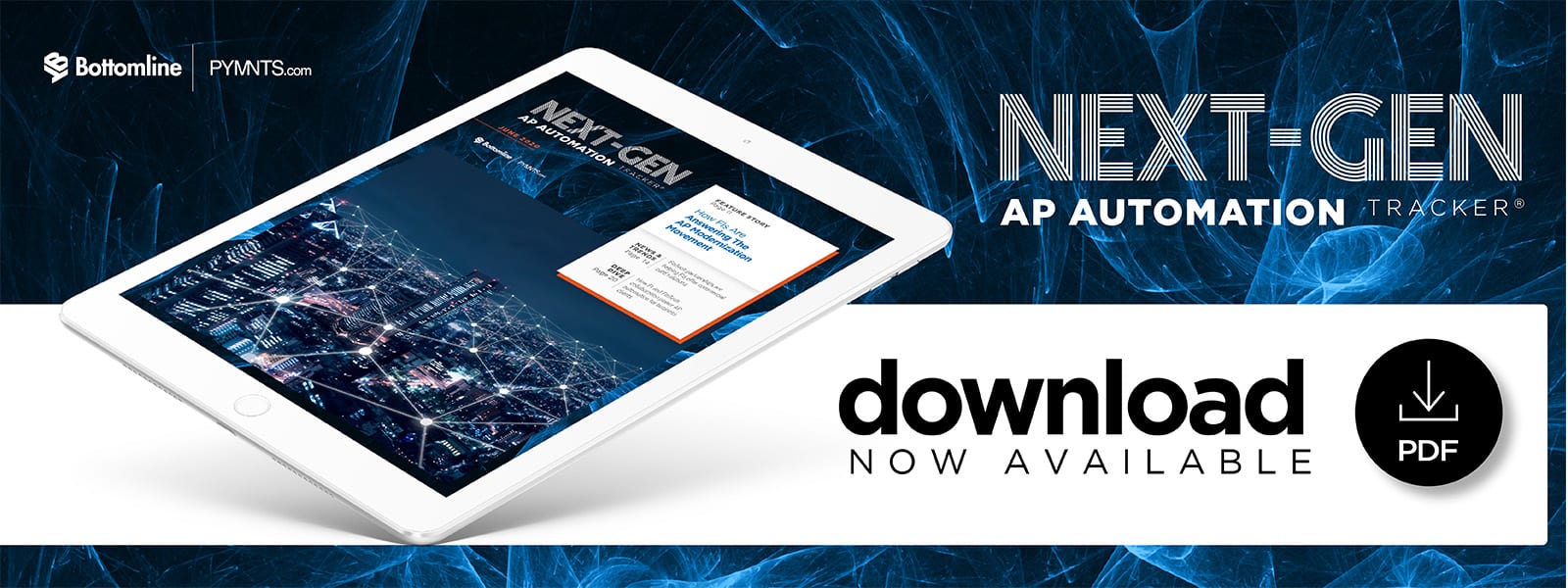How FIs Are Answering The Call Of AP Modernization Movement

Businesses relying on paper-based AP methods could be losing out on thousands if not millions of dollars, Bank of America’s Brad Garfield says. In this month’s Next-Gen AP Automation Tracker, Garfield explains how AP optimization tools can help companies identify key cost-saving opportunities when paying vendors.
Enabling employees to work remotely during the COVID-19 pandemic has sent a wake-up call to companies that their old-school accounts payable (AP) practices will not cut it in the new economy. Firms have had to quickly adjust their operations so workers can stay home to help prevent the virus’s spread, but this has presented hurdles for businesses with entrenched paper-based processes.
AP practices that require processing paper invoices from vendors and mailing out checks force employees to work from their offices, putting their health — and their satisfaction with their employers — at risk. Companies may even have been unable to access their AP processes until they could adopt safer methods.
These stumbling blocks prompted businesses to seriously examine digitizing and improving their AP processes to adapt to the new normal.
Modernized approaches can allow companies to fulfill their business obligations by approving and sending payments from the safety of their homes, for example. Digital tools also offer real-time visibility into corporate cash flows, which can be especially helpful as businesses strategize to address a rapidly changing economic situation, Brad Garfield, head of product for commercial cards and comprehensive payables in global transaction services for Bank of America, recently explained to PYMNTS.
“Cash flow is paramount for our clients in today’s environment, and the largest impediment to business continuity has been the continual existence of paper payments,” Garfield said. “Almost overnight, we saw a very compelling argument for electronic solutions.”
Companies that are heeding those arguments need to quickly find trustworthy, effective AP solutions, and financial institutions (FIs) that can supply ones that meet business clients’ AP needs will likely forge stronger relationships. Many banks are therefore partnering with AP-focused FinTechs to quickly meet clients’ new demand, he explained.
How AP Optimizations Build Stronger Businesses
The pandemic has pushed some businesses to seek AP tools that can enable employees to make secure payments even from their homes and provide insights to better manage their companies’ finances. The benefits of such tools extend beyond meeting workers’ needs during the COVID-19 crisis, however. Modern AP technologies can help companies maintain and even improve their typical processes despite the current disruptions, such as by identifying more efficient ways to pay vendors.
“Efficiencies in the back office can free up thousands — if not millions — of dollars,” Garfield said.
Businesses can learn more about how to enhance their AP operations by tapping analytics and optimization solutions, he said. Such tools help buyers determine whether it would be more cost-effective to send funds to certain vendors via automated clearing house (ACH), commercial or virtual cards or to use supply chain financing solutions, for example. The latter method has buyers’ banks provide immediate payments to vendors and then receive buyers’ repayments on longer timelines.
Each payment method carries its own advantages. Buyers could focus on which option is most favored by suppliers, the costs associated with sending payments that way and the amount of working capital they must retain. The latter often want their funds as quickly as possible, while the former sometimes prefer payment methods that let them hold onto money longer, thus ensuring they have the resources necessary to address any unforeseen needs. The right choices can keep suppliers satisfied while helping buyers address their own cash management concerns
Why FIs Continue To Work With FinTechs
FIs are partnering with FinTechs to meet businesses’ growing demands for digital AP solutions. Corporate customers want to quickly get up and running with new tools that can save them time and money, and they are eager to tap providers that are ready to meet their needs.
“There are many FinTechs with great solutions, and if the bank doesn’t partner with them or build its own competing solution, clients have no problem going direct to the FinTech,” Garfield said. “Historically, banks have just focused on the payment [method] itself, which has left the client needing to develop their own automation around the payment process.”
A multitude of FinTechs has created solutions designed to tackle key AP frictions, and FIs that partner to provide these offerings to business clients can build deeper relationships with them. Corporate customers are likely to value accessing the solutions via their banks, Garfield said, because they trust FIs to help them find the most reliable FinTech offerings.
“Clients value the highly regulated and rigorous security standards banks have for their vendors, which apply to any FinTechs we work with,” Garfield said.
Banks can act as filters for business clients, enabling the latter to harness solutions from FinTechs approved and vetted by the former. FIs’ reputations and security expertise can give businesses the confidence to leverage tools from FinTechs with which they may have no prior relationships.
AP automation solutions are becoming more important than ever for businesses whose operations are hamstrung by paper-based processes, but companies may find it tricky to determine which tools are the best-suited for their needs as they operate remotely and make their overall operations more efficient. FIs that partner with FinTechs can connect their clients with trustworthy, tailored AP offerings that ease these pains and foster deeper customer relationships.
Businesses that have stuck with paper-based AP processes have been feeling the pressure as the COVID-19 pandemic makes it unsafe for staff to conduct manual invoice and payment processing from their offices. As reported by PYMNTS, the upshot is that companies are looking for digital tools to help them maintain their operations during the disruption and also find more efficient processes for the long-term.
